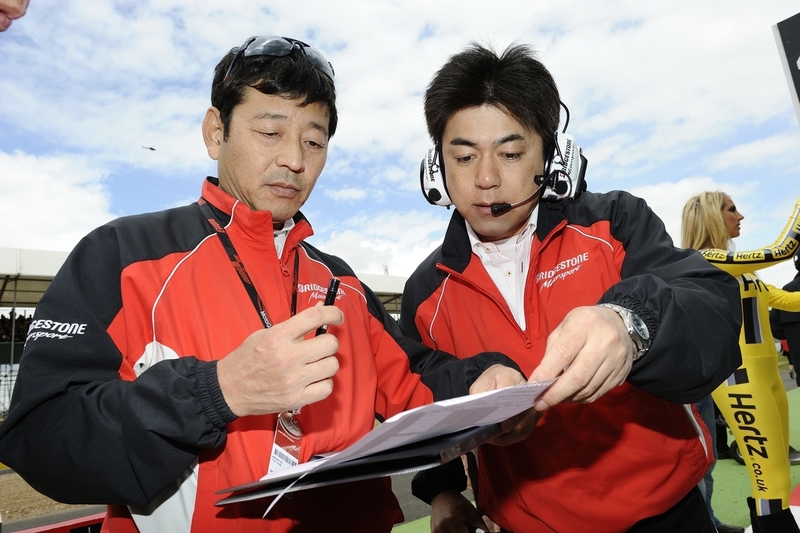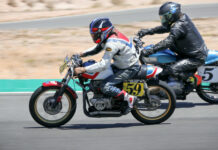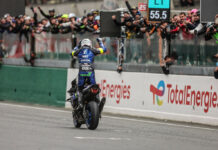Bridgestone reviews the MotoGP™ test at Argentina’s Circuito Termas de Rio Hondo Tuesday 9 July 2013 Last week MotoGP™ riders took to Argentina’s Circuito Termas de Rio Hondo for the first time, with Monster Yamaha Tech3’s Cal Crutchlow, LCR Honda’s Stefan Bradl, GO & FUN Honda Gresini’s Alvaro Bautista and Avintia Blusens’ Hector Barbera all putting rubber to tarmac in an important fact-finding mission for the teams and Bridgestone, the Official Tyre Supplier to the series. Weather conditions over the two day test were varied, with Thursday having mild and dry conditions, before rain occurred on Friday. The wet weather cleared on Friday afternoon, giving the riders further dry track time and overall, Bridgestone was able to gather valuable tyre performance data that will be used to develop tyres for the first race at the circuit which will take place in the 2014 MotoGP™ season. Q&A with Hiroshi Yamada – Manager, Bridgestone Motorsport Department How did Bridgestone prepare itself for the test at Circuito Termas de Rio Hondo and what tyre specifications did you bring for the riders to evaluate? “We have been liaising with the circuit designers who provided us with a lot of data which we used to run performance simulations at our Technical Centre in Kodaira, Japan. It was clear to see that this circuit would be severe for tyres due to the high average speed and a couple of high-camber corners which put the tyres under extreme loads. Looking at the nature of the circuit, one would expect us to supply harder rubber compounds for the test, however we knew that the track surface was dirty due to recent construction work and that there would be cool weather in Argentina, so we decided to bring a full range of tyre compounds so that the riders could manage every possible track condition. “In the end we brought all of our front slick options to Argentina, plus all of our symmetric rear slick options and a selection of asymmetric rear slicks in both the regular and heat-resistant construction. Due to the dirty track surface and rain on the second day, the riders couldn’t assess all the slick tyre choices, but we still managed to acquire enough data to gauge tyre performance at this track. We also brought our soft compound wet tyres, but the riders only used these for a sighting lap in the rain and didn’t get to evaluate them properly over the two days.” In terms of severity, how does the Rio Hondo circuit compare to other tracks on the calendar and are there particular sections that are especially challenging for tyres? “This track is quite severe; I believe it is up there with Phillip Island and Sachsenring in terms of how tough it is on tyres. Whenever there are large radius, high-speed corners it really puts a lot of stress on the tyres. Turn six at Rio Hondo is such a corner and this contributed to very high tyre temperatures during the test. We need to consider that due to the dirty track lap times were slower than they will be for next year’s Grand Prix – around four seconds per lap in our estimation – so tyre temperatures could be substantially higher when we return here. The asphalt looks smooth but is quite abrasive on tyres so we will need to develop tyres that are good at managing high temperature and wear, while also giving the grip needed at this fast and flowing circuit. Developing tyres for this amazing circuit will be a challenge but as we showed with the Circuit of the Americas, this is the kind of technical undertaking that Bridgestone relishes.” Did Bridgestone acquire enough data from the test to decide which tyre specifications it will provide for the first race at this circuit next year? “Yes, the data we acquired helped give us an idea of what tyre specifications we will develop for next year’s Argentina Grand Prix, but ideally it would have been better if the track was cleaner and we had two days of dry track time. One of the most interesting findings from the test is that although there are nine right-hand compared to five left-hand corners, the left shoulder of the rear slicks experienced much higher temperatures than the right shoulder, due to the fast left-handers. However, the greater number of right-handers means abrasion on the right shoulder is quite high, therefore we have two different, but equally important factors we have to manage on the opposing shoulders of the rear tyre; high temperatures on the left shoulder, high abrasion on the right shoulder. “With this in mind, I believe that our rear slicks for next year’s Grand Prix at this circuit will be in our heat-resistant construction. For the front slicks, I envisage we will need options that are towards the harder end of our compound selection to give the riders the stability and abrasion resistance they will need at this demanding circuit. We must also consider that next year’s Argentina Grand Prix will most probably take place in warmer weather than we had at this test, this will result in higher track temperatures which again suggest harder rubber compounds will be used in our tyre allocation for next year’s race.”
Bridgestone Describes Argentina’s Circuito Termas De Rio Hondo “Quite Severe” On MotoGP Tires
Bridgestone Describes Argentina’s Circuito Termas De Rio Hondo “Quite Severe” On MotoGP Tires
© 2013, Roadracing World Publishing, Inc.






